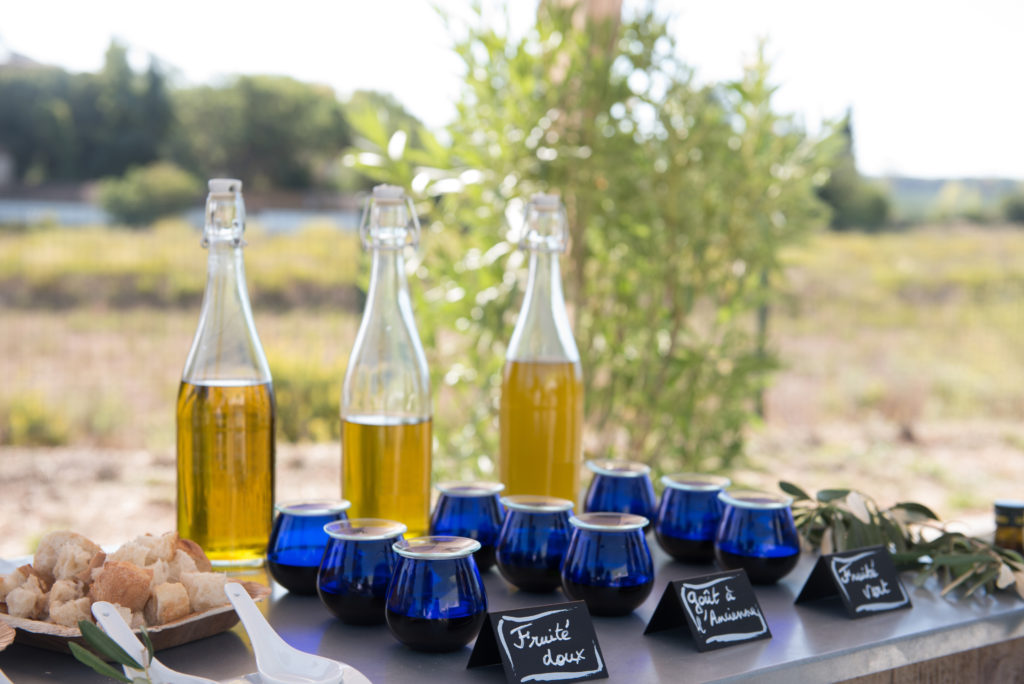Tasting
At Cauvin, we have set up a tasting panel to carry out organoleptic tests, which are complementary to our physico-chemical analyses. Selection and monitoring are the role of this panel made up of 10 people from different departments of the company. Trained in the techniques recommended by the International Olive Council, they guarantee the conformity and taste quality of our products.
Our tips for a successful tasting
How does our panel select products for our Oil Cellar? With sensitivity, technical advice and tips that make the difference, it will share its secrets with you. Have your taste buds at the ready!

The key elements of a successful tasting: olive oil as a practical example
First of all, pay attention to any defects that could adversely affect the quality of the oil: rancidity, fustiness, mustiness, wineyness. These negative attributes characterise an olive oil that is not extra virgin.
Then train yourself to identify the positive attributes:
- the intensity of the fruit (synonymous with the strength of the aroma), first on the nose and then on the palate.
- the bitterness (which gives body), tasted at the back of the tongue.
- le piquant (ou ardence), qui s’exprime par un picotement sur le bout de la langue et dans les joues, diminue avec le vieillissement de l’huile.
To go further
Do the aroma and fragrance of an olive oil awaken memories in you? Well done! That means you are on the right track. Here are some things to note as you become a real connoisseur:
- If the oil reveals flavours of red berries, tomato, apple, pineapple, almond or hazelnut, it has been a late harvest.
- If you detect flavours of greenness, raw artichoke, green banana or green tomato, the fruit was pressed at the start of the harvest.
- If aromas of mushroom, cocoa or black olive are expressed, it is a mature oil.
And to take your palate to the four corners of the world, try tasting other fruit oils (walnut, hazelnut, argan, avocado, etc.) or virgin seed oils (rapeseed, sunflower, sesame, flax, camelina) whose flavours vary from harsh to sweet and from robust to round.
Remember: Depending on the terroir and especially the variety, each oil expresses its own characteristics. It's up to you to identify them!
